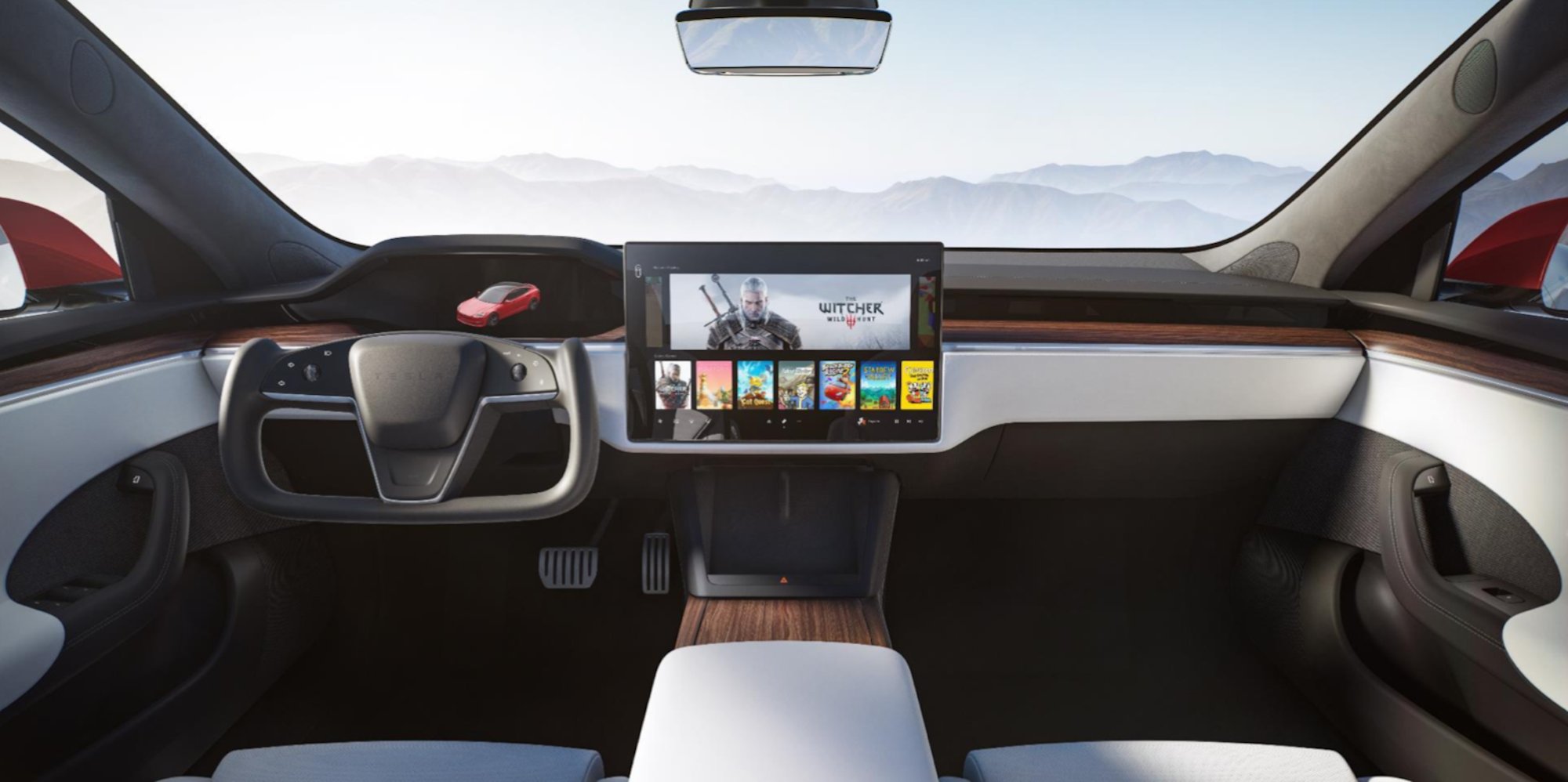

After years of waiting and rumors, Tesla fans were rewarded yesterday with an announcement from Elon Musk about an insanely speedy new version of the company’s Model S sedan. And the news came with big promises, as Tesla updates usually do: The top-end “Plaid” editions will be able to rocket from 0 to 60 in 1.99 seconds or less. That speed is record-setting, as the sub-two-second mark is something even million-dollar supercars haven’t been able to crack.
“This is the fastest accelerating car ever made that is allowed to go on roads, in history,” Musk boasted. This the first upgrade to the car since 2012.
The Model S comes in two basic versions—Plaid and Long Range. While the Plaid—which draws its name from the 1988 Mel Brooks comedy, Spaceballs—promises ludicrous acceleration, the Long Range model will squeeze more mileage out of each charge. It can travel an estimated 412 miles, versus the Plaid’s 390. It accelerates slower than the Plaid, but “slower” in this context is still 3.1 seconds from 0 to 60 mph.
More specifically, model S Plaid vehicles actually come in two configurations: your basic Plaid, with a 1.99 second 0-60 time, and the more expensive Plaid+, which boasts a sub-1.99 second time and longer range.
While the Long Range version relies on two electric motors, Plaid packs in three, the first time the S-model has had a tri-motor setup.
Other changes to the new Model S include a new rectangular steering wheel (it resembles the yoke you might find on an aircraft like a 747) and a 17-inch display in the center that has a horizontal orientation instead of the previous vertical set-up. That screen will be lovely for gaming, according to Tesla’s marketing. The back seat, which holds three, also has a screen for the passengers to stare at.
Of course, a luxury electric sedan that has this type of performance and amenities is not inexpensive: The long-range version begins at $79,990, and Plaid at $119,990. Musk noted in the briefing that the price is now $10,000 more expensive.
But insane acceleration and matching high prices are not benefits for the general public, argues David R. Keith, an assistant professor of system dynamics at MIT’s Sloan School of Management and an auto-industry expert. He notes via email that the car’s acceleration time is amazing, “But it is also a level of performance that is way beyond the needs of any driver on public roads. What the market really needs is cheaper EVs with longer driving ranges, because EVs already have better acceleration than conventional gasoline vehicles.”
Of course, the Model S isn’t the least expensive vehicle that Tesla makes: that’s the Model 3, which goes for $37,990. And electric vehicles in general are becoming more accessible, meaning that folks who can afford electric cars in a price range north of $30,000 are going to need to think about what range and charging would really mean for their daily use.
Back in September, Musk hosted a “Battery Day” event, during which time he dove into the company’s new power-storage tech and also spoke about the company’s aspiration to create a Tesla that would cost less than $25,000. But Tesla’s own track record suggests that people interested in purchasing a vehicle like that from Musk’s company should not hold their breath.
In the meantime, anyone with more than $100,000 to spare on a fancy new electric ride—and the speeding tickets that could come with it—can drool over the Model S Plaid.
